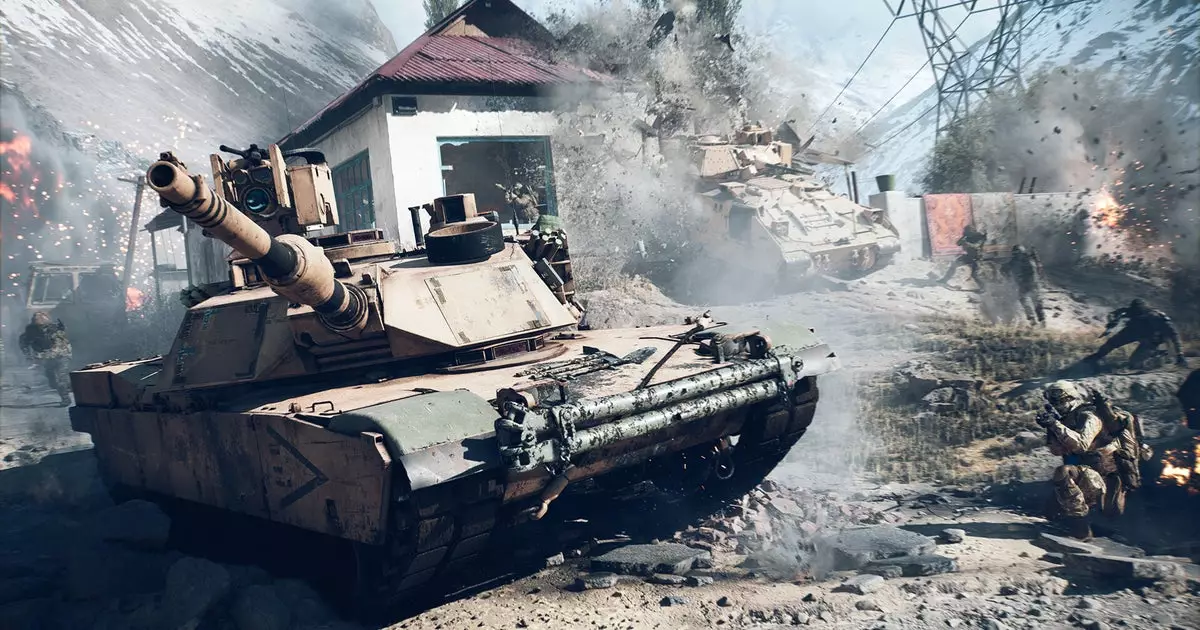In the chaotic universe of Battlefield games, vehicles evoke a paradoxical blend of admiration and frustration. Players often marvel at the destructive power and cinematic flair of tanks, jets, and helicopters, yet simultaneously grapple with their unpredictable handling and perceived fragility. This imbalance is not merely a matter of player skill; it is a deliberate design choice rooted in the intricate artistry of game balancing. The dichotomy between AI-controlled vehicles that glide with precision and player-driven ones that wobble like shopping trolleys underscores a deeper narrative about the evolving challenge of crafting a compelling multiplayer experience.
What makes this dynamic particularly compelling is how developers seem to flirt with an intentional imperfection. It is tempting to dismiss the spry and agile AI vehicles as unrealistic or overpowered, but upon closer inspection, they function as strategic tools. They test player adaptability, foster emergent gameplay, and prevent vehicles from overshadowing infantry. The apparent squishiness of player-controlled tanks in Battlefield 6 beta, as described by lead producer David Sirland, reveals a conscious effort to keep vehicles vulnerable, thereby maintaining tension and balance across the battlefield.
The Balancing Act: Between Power and Vulnerability
Creating a balanced vehicular component in a multiplayer war game entails a constant tug-of-war between power and vulnerability. On one side, developers aim to avoid the pitfalls of overpowered vehicles that diminish infantry importance and squash strategic diversity. On the other, they must ensure that vehicles are not so weak that they become the laughingstock of the battlefield, reducing their role to mere scenery or cannon fodder.
Sirland’s admission that vehicles initially may have been “lowballed” suggests a strategic gamble: build a foundation that favors weaker vehicles, then adjust based on player feedback. This approach aims to prevent scenarios where vehicles dominate gameplay, discouraging infantry or making certain maps feel imbalanced. As players become more adept at employing anti-tank weapons, these “weak” vehicles might become feared and respected, which is arguably part of the ecosystem of engaging multiplayer combat.
It’s a testament to how dynamic and ongoing the balancing process is. Developers must anticipate not only current player tactics but also how strategies evolve over time. This anticipatory balancing is tantamount to playing a 3D chess game, constantly predicting and adjusting for future moves, all while keeping the game’s core fun intact.
The Unintended Consequences of Balance and the Human Element
A misconception many have is that a perfectly balanced game exists—a utopia where every weapon, vehicle, and map is perfectly tuned. The reality, however, is far more complex. Balance is, perhaps, an unending pursuit. It resembles a moving target, especially in multiplayer games where community ingenuity constantly transforms gameplay.
The sensation that vehicles are somehow less hardy than expected may be driven by multiple factors: the developers’ deliberate design, players’ skill progression, or even psychological biases. If vehicles consistently felt impenetrable, the game could descend into frustration and chaos, losing strategic depth. Conversely, if they are too fragile, players lose interest in their use, and the game shifts towards infantry-centric combat—potentially a less diverse experience.
This delicate equilibrium raises questions about the evolutionary foresight of developers. Are they intentionally releasing games with a pulsing imbalance, a calculated risk that invites players to discover new tactics and adapt? In essence, balancing is less about perfection and more about fostering a living, breathing environment that remains engaging over months and years. The idea is not merely to make vehicles effective but to craft an ecosystem where players’ ingenuity continually challenges the status quo.
Implications for Future Battlefield Developments
With upcoming updates featuring maps teeming with vehicles, players can expect the tug-of-war between firepower and resilience to intensify. The feedback loop from beta testers influences the larger design philosophy, directing how heavily vehicles should be weighted in different scenarios. It’s an ongoing experiment: increase vehicle durability, and risk diminishing infantry roles; weaken them, and risk making encounters trivial or anticlimactic.
Ultimately, this approach signals a broader understanding that games, especially multiplayer titles like Battlefield, thrive on their imperfections. It is within these inconsistencies and continuous adjustments that players find depth, challenge, and sustained interest. Developers are unlikely to ever finalize “perfect” balancing, but rather aim for a dynamic equilibrium that keeps the community engaged, adaptive, and eager to master the next patch.
Balancing in Battlefield is less about creating flawless archetypes and more about sculpting an unpredictable battlefield—a lively space where every match can surprise, frustrate, or exhilarate players. Imperfections are not bugs; they are the heartbeat of engaging gameplay. And perhaps, in embracing this, Battlefield continues to evolve as a fascinating reflection of the chaos and artistry inherent in warfare itself.


Leave a Reply